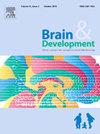小胎龄作为发育协调障碍的预测因子:从日本出生队列联盟探索早期风险
IF 1.3
4区 医学
Q4 CLINICAL NEUROLOGY
引用次数: 0
摘要
小胎龄(SGA)和发育协调障碍(DCD)在儿童发育中越来越受到关注。了解DCD的风险,特别是与SGA有关的风险,将有助于儿童的健康和发展。然而,SGA和DCD之间的关系在单队列研究之外仍然未被揭示。本研究旨在整合日本全国前瞻性出生队列联盟(JBiCC)中不同队列的DCD研究结果。研究设计和受试者:dcd在参加JBiCC的三个出生队列中的4至7岁儿童中进行评估:北海道环境与儿童健康研究(北海道研究)、滨松母婴出生队列(HBC研究)和东北医学大库项目出生和三代队列研究(TMM BirThree队列研究)。使用发育协调障碍日本版问卷(DCDQ-J)或第三版年龄和阶段问卷(ASQ-3)对dcd进行评估。采用Logistic回归评估每个队列中SGA和DCD之间的关系。其次,对DCDQ-J定义的SGA与DCD之间的相关性进行meta分析,并对SGA与DCDQ-J评分之间的相关性进行个体患者资料(IPD) meta分析。结果和结论该分析包括三个队列的14233名儿童。除了TMM BirThree队列研究外,个体队列分析没有探讨统计学意义。北海道和HBC研究的综合分析显示,β-系数为- 2.63,95% CI[- 5.22, - 0.03]。线性回归IPD分析显示,β系数为- 2.76,95% CI[- 5.38, - 0.15]。我们的研究结果表明,SGA可能是DCD的潜在危险因素。本文章由计算机程序翻译,如有差异,请以英文原文为准。
Small for gestational age as a predictor of developmental coordination disorders: Exploring early risk from Japan birth cohort consortium
Background
Small for gestational age (SGA) and developmental coordination disorder (DCD) are receiving increasing attention in pediatric development. Understanding the risk of DCD, particularly in relation to SGA, would support children's health and development. However, the relationship between SGA and DCD remains unveiled beyond single-cohort studies.
Objectives
This study aimed to integrate findings on DCD from different cohorts within the nationwide prospective Japanese Birth Cohort Consortium (JBiCC).
Study design and subjects
DCD was assessed in children aged 4 to 7 years from three birth cohorts participating in the JBiCC: the Hokkaido Study on Environment and Children's Health (Hokkaido Study), the Hamamatsu Birth Cohort for Mothers and Children (HBC Study), and the Tohoku Medical Megabank Project Birth and Three-Generation Cohort Study (TMM BirThree Cohort Study).
Outcome measures
DCD was assessed using either the Developmental Coordination Disorder Questionnaire Japanese Version (DCDQ-J) or the Ages and Stages Questionnaires Third Edition (ASQ-3). Logistic regression was used to assess the association between SGA and DCD in each cohort. Second, meta-analysis of the association between SGA and DCD defined by DCDQ-J, and individual patient data (IPD) meta-analysis of the association between SGA and DCDQ-J scores were conducted with two cohorts.
Results and conclusions
The analysis included 14,233 children in three cohorts. The individual cohort analyses did not explore statistical significance, except for the TMM BirThree Cohort Study. Meta-synthesis of the Hokkaido and HBC studies showed a β-coefficient of −2.63, 95 % CI [−5.22, −0.03]. IPD analysis of linear regression showed a β-coefficient of −2.76, 95 % CI [−5.38, −0.15]. Our results suggest that SGA may be a potential risk factor for DCD.
求助全文
通过发布文献求助,成功后即可免费获取论文全文。
去求助
来源期刊

Brain & Development
医学-临床神经学
CiteScore
3.60
自引率
0.00%
发文量
153
审稿时长
50 days
期刊介绍:
Brain and Development (ISSN 0387-7604) is the Official Journal of the Japanese Society of Child Neurology, and is aimed to promote clinical child neurology and developmental neuroscience.
The journal is devoted to publishing Review Articles, Full Length Original Papers, Case Reports and Letters to the Editor in the field of Child Neurology and related sciences. Proceedings of meetings, and professional announcements will be published at the Editor''s discretion. Letters concerning articles published in Brain and Development and other relevant issues are also welcome.
 求助内容:
求助内容: 应助结果提醒方式:
应助结果提醒方式:


